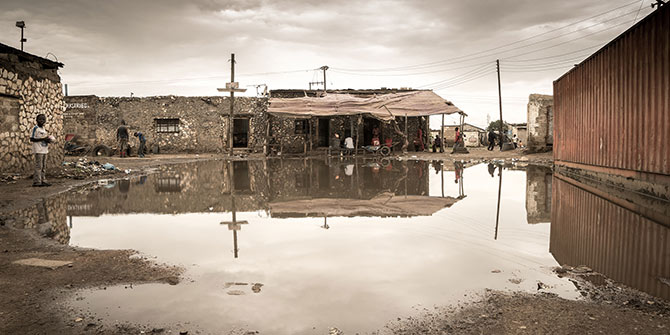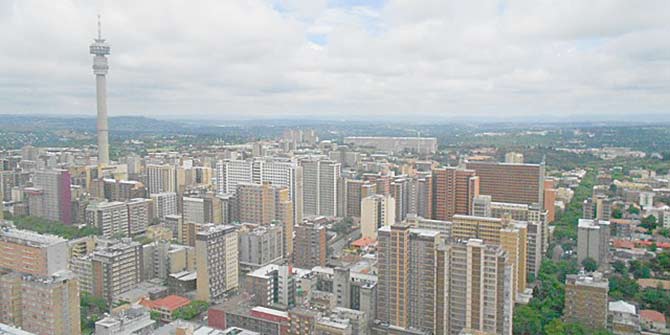This is the third in a series of guest posts from Ato Quayson, Professor of English and the Director of the Centre for Diaspora and Transnational Studies at the University of Toronto. In this post, he examines the theatre which adorns Accra’s Oxford Street.
Cars and pedestrians mix freely on the road itself. Even though the notorious and practically ubiquitous open sewage gutter serves as a demarcation line between the tarred road and the pavement, the two are level with each other*.
As you walk along Oxford Street, you are constantly invited to pause and look at things, not in the manner of shop windows in commercial boulevards elsewhere which entice pedestrians to stop, take a quick look at their reflection in the glass, and perhaps enter the store+, but by the constant barrage of vendors of all manner of goods vying to make a sale.
The invitations to treat, to use a well-known phrase in commercial law, are only an irritation if you are in a hurry to get somewhere. If not, the invitations to treat proffered by the vendors on Oxford Street may open up a variety of culturally saturated modes of haggling and bargaining, with jokes, teasing and overall good humour thrown in for good measure. There is a distinctly carnivalesque quality to this aspect of the street. But it also means that the character of walking on Oxford Street and the human interactions engaged while on it are very different from commercial streets elsewhere, such as in, say, London, Singapore, or Johannesburg to cite but three examples.
Since much of the length of the pavements on both sides of the street have been taken over by the businesses and vendors as already mentioned and cars have no monopoly over the road, the experience of walking along Oxford Street involves a lot of zigzagging, moving off and onto the pavement or the tarmac with the negotiation of one’s perambulations amid vehicles, vendors, goods and pedestrians as convenience and inclination dictate. The walk on Oxford Street, as in many parts of Accra, is thus an object of improvisation.
If there is a performative dimension to the street that operates unconsciously upon those who traverse it, then this is not to be mistaken for the performativity made explicit by specific and occasional theatrical and political events, such as the annual December carnival held on Oxford Street, or the spontaneous outpourings of jubilation whenever Ghana makes strides in international football tournaments. Rather, the character of walking on the street exposes itself to the possibility of spontaneous “events” that themselves follow set performative scripts.
The messy interaction of pedestrians with other pedestrians, with pushcarts, with itinerant hawkers on the pavements and with vehicles on the road means that misunderstandings regularly break out about the courtesies of street use. These are not merely the road rage variety of misunderstandings. Insults may be quickly traded between pedestrian and pedestrian, pedestrian and hawker, pedestrian and motorist or between one motorist and another.
However, the traded insults turn out to be an important aspect of the spectator mentality endemic to Accra’s street life, so that ultimately the fact of seeing and being seen means that everything in the spontaneous heated altercation turns on the mastery of unstated cultural codes of rhetoric and delivery. Despite the constant busy buzz on the street, any loud altercation is bound to attract an immediate and expectant audience. Reference to various parts of the human anatomy and its effusions proliferate in such exchanges but the hyper-inflation of such references is not the real point of the scatological insults. What is important is to produce a memorable twist on a known theme or themes both to show your superiority over your opponent and to raise a laugh from casual observers. Mastery may involve the clever deployment of local language proverbs, but not exclusively.
My personal favourite was a taxi driver who was speeding toward a zebra crossing and had to slam on his brakes to allow a bunch of people to cross. They turned around and rained all manner of insults on the driver as they did so, to which he lustily retorted in Twi: “Hwe nyen ho tan tan bi, a se ngyamoa atɔ gya mu” (Look at all you nasty people, like a bunch of cats that have fallen into a fire!). At which general laughter and more insults were directed at the fast receding exhaust fumes of the offending taxi. And yet the effectiveness of the driver’s insult and its memorable nature derives not so much from the mention of cats as from the domestic setting signalled by the reference to fire, something that would immediately invoke a traditional charcoal fire kitchen well known to the denizens of Accra.
The reference to cats in a traditional kitchen evokes all kinds of chaotic scenarios, including the confused din of overturned pots and pans, the wild screams of the cook and perhaps the splattered end of the meal brewing on the said fire. The taxi driver’s entire insult then combines implicit references to dishevelment, noise, absolute chaos and improper and unpredictable behaviour within a domestic setting, which then stands as a correlative of the confusion of the pedestrians who, in his opinion, do not even know how to negotiate the city’s streets. And this is despite the fact that he is the one who is patently in the wrong.
The implication from the driver’s insult then is that, despite all appearances to the contrary, the zebra crossing is not a simple and inert marking on the road whose usage is determined by standards universally known and replicable elsewhere, but rather that it inadvertently demarcates the theatre for the display of the universal as it is forced to interact, perhaps reluctantly, with the saturated cultural repertoires of local space making. The altercations about road use can also be seen as moments for the attribution of social consensus upon the domain of human interaction on the street. Here, social consensus has nothing to do with agreement or otherwise but instead involves arguments about normative domains of social expectations qualified with reference to a variety of universal and local performative scripts. It is these moments of seeming collapse, then, that mark Oxford Street and many like it all across Africa as eventful and lively, not just the sterile commercial variety that may be found elsewhere across the globe. If you just want to shop, better stay in London, New York, Amsterdam, or Berlin. Oxford Street offers something more than the plenitude of a false freedom.
Catch up with the rest of the series: Oxford Street part 1, Oxford Street part 2
*The pavement is not consistently raised some four or five inches above the road, but is at par with it for much of the length of the street.
+ The displays in the shop window perform the function of whetting your desire and inducing a crossing of the boundary between inside and outside.







Aptly captures the higgledy-piggledy atmosphere of Oxford St, which is much like other busy Accra streets, only that there is a high concentration of multinational businesses like Vodafone.